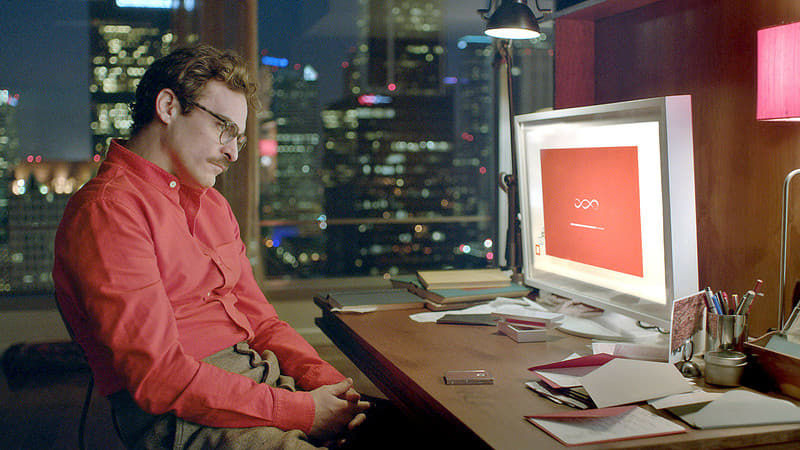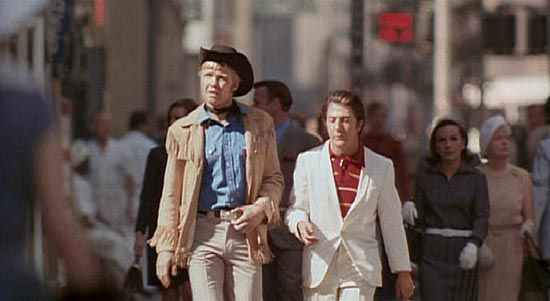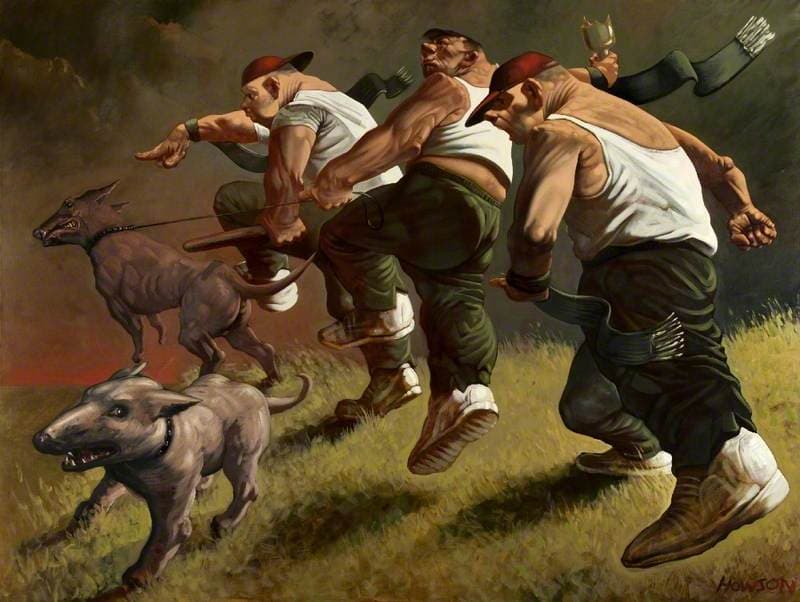Directing our Eyes
- David Ezekiel Clist

- May 8, 2020
- 3 min read
Take a look at these frames from some movies. While you do, think about where your eyes go as you look around the image.

THE FALL (2006) cinematography by Colin Watkinson.

TWIN PEAKS: FIRE WALK WITH ME (1992) cinematography by Ronald Victor Garcia

HER (2013) cinematography by Hoyte van Hoytema
Now I’ll show you again the image for HER and I’ve included arrows to show where your eyes should’ve gone.

I’m going to assume that you did match this arrow, and I shall hopefully spend the next ___ words trying to tell you why.
I should also probably use this time to include an easier example to understand. The following painting Patriots by Peter Howson is almost worth an entire article itself to discuss. But that’s neither here nor there.
Click on the arrow on the right to see the lines of focus
The important thing here is how the white shirt of the character to the right immediately catches your eye. And your eye subsequently follows the other white vests to the left. The information about a painting that can be gathered from its focal point is certainly limited. But with films, you've got a whole new experience and it's harder to control the viewer's vision.
The focal point in the film is usually just to help make a character or actor stand out more. Thinking less so of where your eye goes, now see how the focus and colour can make someone stand out in this image from Midnight Cowboy.

There's several techniques used her to make the two characters stand out.
Obviously you'll first notice the colours are far brighter than the rest of the people in the shot.
Next you can notice that most of the background is made blurry and harder to pick out finer details that you easily can from Jon Voigt's jacket.
Finally also the lighting is deliberately aimed at them, replicating the sun. This is obvious I confess, but it's subtle enough that you wouldn't think to question it if you weren't already looking out for it.
The aim of this piece is less so to make an argument or convince you of anything. This is more informational, teaching or describing some of the techniques used so you can maybe spot them more in other films.
Take a look at this shot from 2016's Lights Out:

Looking only at the shot, and none of the context makes it a bit harder to properly analyse what's wrong with it, so I've included this gif to basically sum up the point of the scene.

Some ghostly figure standing only in the darkness. Very scary. However I'm sure you noticed that every time the lights come back on your eye isn't directed to the woman, taking up most of the space, but to the shirts. Once the previous focal point disappears your eyes get caught by the red and blue, before the black. Why is this?
I can't say for sure, I'm no neurosurgeon or optician, but from my perspective, the woman doesn't actually change with the rest of the shot. She doesn't suddenly get lit up with the rest of the scene. So our eyes dart around looking for something that could reason with where the figure has gone. Leaving you gazing confusedly at the rack of shirts. Not to mention their close proximity.
Since I learned about focal points I've been seeing and looking at them everywhere. Of course, aside from in paintings you won't see much analysing of focus points. I can't think of a way that the focal points themselves tell a story, so this article is simply to teach of techniques that I may discuss in future articles.
I might even do a follow-up where I discuss some works of art, get really pretentious.
Next week I'll write about colour in films, how it's used to teach us about characters and themes and whatnot.
Feel free to ask me any questions on focal points in the comments, I'll answer every question to the best of my ability.







Comments